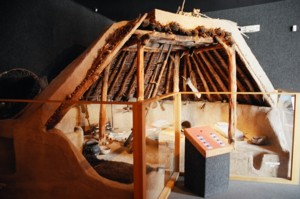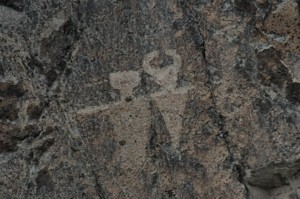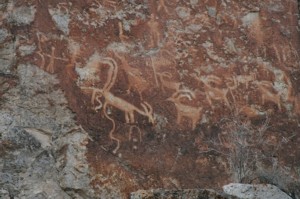This article may include affiliate links. If you click a link and make a purchase, Utah Outdoor Activities may receive a small commission at no extra cost to you. We only recommend products or services we personally use. FTC Affiliate Disclosure.

Fremont Indian State Park and Museum was established by the Utah Legislature in 1985 to preserve Clear Creek Canyon's treasury of rock art and archaeological sites. In November 1983, during construction of Interstate 70 through Clear Creek Canyon, the largest known Fremont village was discovered.
On Five Finger Ridge over 100 separate structures were excavated in 1984-1985. All of the structures were not occupied simultaneously and the maximum population was about 100. Hundreds of thousands of artifacts were excavated from Five Finger Ridge and are now on display in the museum. After archaeological excavation, the actual village site was destroyed by I-70 construction.
Fremont Indians:
The Fremont culture was first identified from sites found in 1928 along the Fremont River near Capitol Reef National Park. Archaeologists noticed that and artifacts were different than those in Anasazi sites in the south. Unique characteristics included previously unseen pottery types, dew claw moccasins, unfired clay figurines and petroglyphs with a trapezoidal body shape. With the exception of far southern and southeastern Utah, Fremont sites have been found throughout most of the state. They also have been discovered in adjacent regions of neighboring states. They depended on seasonal food gathered in Clear Creek marshes and the surrounding pinyon / juniper forest.

Other Canyon Occupants:
As early as 5200 B.C., Clear Creek Canyon was used by prehistoric hunters and gatherers. Early Spanish explores probable used the canyon as a passageway through the Pahvant Plateau. Latter explorers and trappers used the canyon as an east-west travel route. Jedediah Smith and his party passed through the area in 1826, leaving initials and a date on the canyon walls. In 1891, gold was discovered at nearby Kimberly. The town flourished with a power plant, boarding houses, salons, a school, doctor's office, and a opera house. In its heyday, Kimberly had a population of 1,200 people. No one resides there today, but it remains an interesting tourist site just seven miles southwest of the park visiting center. Ranches, farms and business occupied Clear Creek Canyon from the 1880s until they were displaced by interstate 70 in 1985.
Rock Art:
Rock art on the canyon walls is a reminder of Fremont Indians and other peoples who inhabited or traveled through Clear Creek Canyon. The park is one of the best places in Utah to see and study rock art. Take some time to discover its treasures. Two types of rock art are found in the park. Pictographs were painted on the canyon walls. Petroglyphs were chipped chiseled or etched into the walls. (Indians chiseled through the rock's darker surface, called desert varnish, to expose the lighter underlying rock, creating the picture.) The meaning and purpose of rock art remains a mystery. There is no universally accepted interpretation among archaeologists. Explanations range from a form of written history to doodling. Only the artists knew the meaning of the images. As you look at the rock art, try to imagine what the artist was trying to communicate through pictures.

More Information:
Fremont Indian State Park
11550 W. Clear Creek Canyon Rd.
Sevier, Utah 84766
Phone: (435) 527-4631
Nearby Cities:
We hope you enjoyed this information. For more outdoor activities, please connect with us on YouTube, Facebook and Instagram. Help us keep this site up and running by visiting our online store which features outdoor themed gifts, decor and more. Thank you for visiting and for your ongoing support!